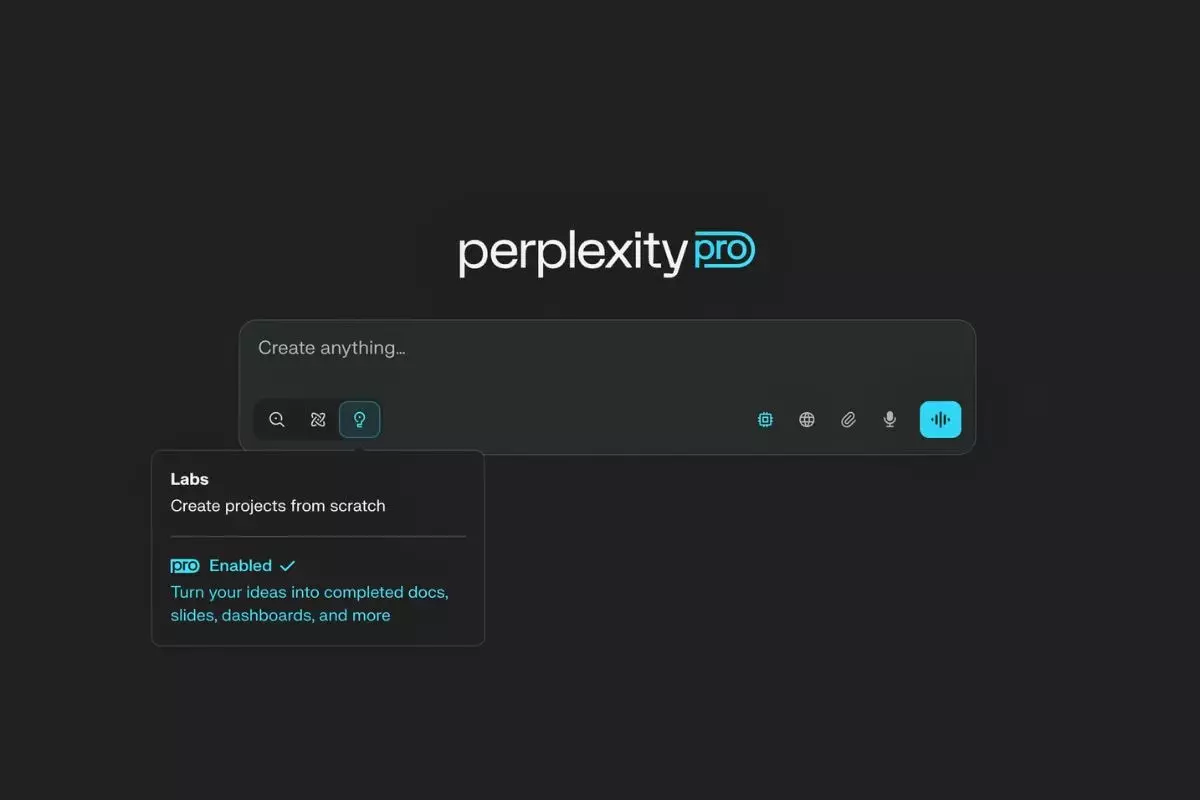In an era where artificial intelligence is reshaping the landscape of technology, the emergence of features like Perplexity Labs represents not just an enhancement but a paradigm shift in how we engage with information. Launched by San Francisco-based Perplexity, this innovative feature allows users to convert mere text prompts into fully developed projects—everything from analytical reports to rudimentary web applications. It signifies a bold leap towards making complex tasks accessible, eliminating the traditional barriers that often hinder productive exploration and engagement with digital tools.
The Power of Deep Integration and Accessibility
What makes Perplexity Labs particularly intriguing is its deep web browsing and code execution capabilities. These aspects usher in an array of functions that were once the domain of specialized software or expert users. The social implications of democratizing technology can’t be overstated. People from diverse backgrounds, whether they’re aspiring entrepreneurs or students working on projects, now find themselves equipped with tools that can create trading strategies, design immersive storyboards, and visualize complex data—all within minutes. This level of accessibility could unlock a new wave of creativity and productivity across various fields.
Beyond the Promises: The Reality Check on AI Capabilities
However, beneath this shiny exterior lies a labyrinth of complexities. While enthusiasts rave about the capabilities of Perplexity Labs, one must approach this innovation with a cautious optimism. The lack of clarity regarding its functionalities, particularly whether it supports a multi-agent workflow or how it integrates separate large language models for distinct tasks, raises questions about its reliability. Transparency in these areas is crucial; users must be able to trust the tools they are using to accomplish high-stakes tasks.
Furthermore, the concept of “self-supervised” tasks suggests that the software has autonomy in completing assignments, but this leads to crucial ethical dilemmas. If the AI takes ten minutes or more on a task without supervision, who is ultimately accountable for the outputs? The potential risks of misinformation or inaccuracies become more pronounced when users are not able to interrupt or adjust the AI’s processing once a task has begun. This raises broader concerns about the accountability of the AI industry, especially when products are marketed with a sense of infallibility.
Challenging the Nature of Creativity and Work
Perplexity Labs invites us to rethink what it means to create. In an age where collaboration between humans and machines is becoming an everyday reality, the very essence of creativity, problem-solving, and critical thinking is being redefined. This innovation spurs an essential dialogue about the value of human intuition and emotional intelligence in creative processes that AI cannot replicate. Certainly, AI can generate a trading strategy or visual storyboard, but can it infuse it with the nuanced understanding of context that a human creator brings?
The projects generated by AI may be technically proficient, but the heart of compelling narratives, innovative strategies, and artistic designs often comes from personal experience and insight—qualities that a machine can mimic but not genuinely embody. This raises a provocative question: as we integrate such technologies into our workflows, how do we ensure that they augment rather than replace the uniquely human dimensions of creativity?
The Implications of a New Era
As we stand on the cusp of this technological revolution, the implications of Perplexity Labs are far-reaching. From individual empowerment to systemic changes in corporations and educational institutions, this innovation calls for a strategic approach to AI use. Proponents of center-wing liberalism, like myself, advocate for policies that emphasize ethical considerations, advocating for frameworks that promote transparency and accountability in the tech industry.
It is crucial for both developers and users alike to engage in ongoing discussions surrounding ethics and the human-centric approach to technology. Ultimately, the real measure of success for Perplexity Labs will not be merely its capabilities but how responsibly it can adapt within the broader social fabric. With both excitement and skepticism, we should welcome this advancement while also preparing for the questions it brings forth. The balance between leveraging AI’s potential and safeguarding human creativity is the dance of our digital future.


Leave a Reply